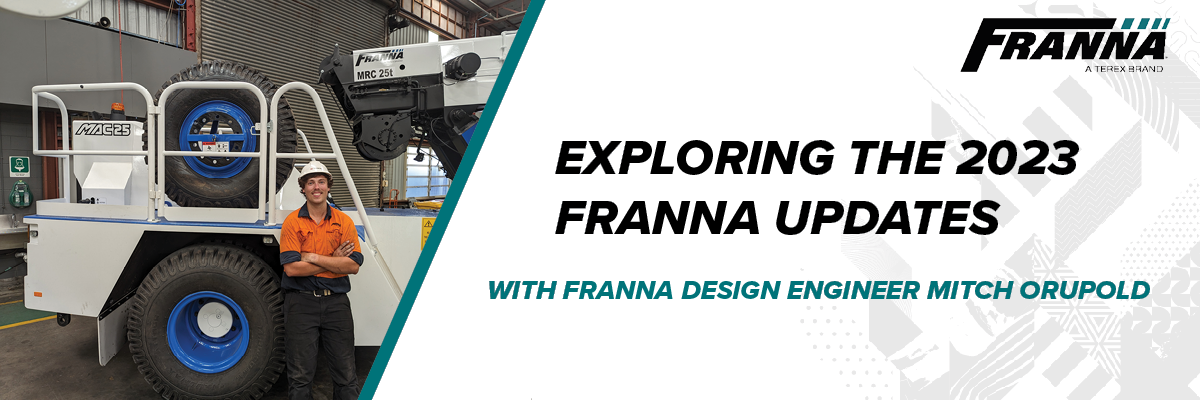Exploring the 2023 Franna Updates with Mitch Orupold

“Generally, my role is to make the square pegs fit into the round hole.”
That’s how Design Engineer Mitchell Orupold describes his position at the Australian based manufacturing site for Franna. His career has seen him graduate from the University of the Sunshine Coast with a Bachelor’s degree in Mechanical Engineering, move onto a career in civil construction, before having a conversation with Franna in October 2021. It was there where his logical thinking and practical attitude gained recognition as a graduate design engineer, moving into his current position a mere nine months ago.
What this means for Mitch and the engineering team is that, on any given day, a customer could come to Franna and request a specific feature, to meet a specific requirement, on a specific job – and it’s him and his team’s job to make that feature work within the crane. As he says: square pegs, round holes.
According to Mitch, the fact that Franna devises specific, tailor-made solutions to unique customer requests is not an area of its business that is well known. However, it is a facet of the business that leads to some of the most significant safety and practicality developments in the Australian manufacturer’s cranes, as seen in the January/February edition of Cranes and Lifting through the 360-degree camera and enhanced Dynamic LMI installed on the Spark consortium’s four Franna cranes working on the North East Link project.
2023 has seen some significant requests asked of the design team at Franna, too. Reeling off an abundant amount of additional features, Mitch highlights a specific client needing to meet an air quality standard within the MAC25 cabin; for that to pass, an HEPA filter rated cabin air and cabin pressurisation monitor needed to coexist – a solution that was resolved by the team at Franna. Other features across the calendar year included an updated cooling pack aimed at improving serviceability, a redesigned bar grill that is now removable to better access and service the engine, a new pressuriser for the AT40 that minimises dust particles coming in while better pressurising the cabin, and, what Mitch labels a “locator system” for the MAC25 Superlift mode. To counter an influx of bent pins from customers completing “simple lifts” thanks to counterweights sliding too far to one side and thus making the crane think it’s in Superlift mode, Mitch devised “small little wedges” that slot onto the lugs and stop the counterweight sliding back and forth, hence stopping the issues – as he says, “nothing crazy”, but a “handy little solve”.
The Franna engineering team are constantly evolving and upgrading the cranes. In 2023 alone, 155 upgrades were completed. These upgrades ranged from swapping out a hex head bolt to a round head in the leaf springs, to updating the generation 5 transmission to generation 6. While some of these upgrades are additional options, many of them become standard.
Mitch’s upgrades also span into the mining and underground applications industries. Advancements from the year that’s been include tailoring cranes to specific requirements such as in LPG mines or charged air environments, where a choker valve is now available to shut off air to the engine and reduce the risk of an engine overheating beyond the point of control. Upgraded fuel lines have been on the item list, as well as enhanced warning lights on the front of all cranes – again, all tailor-made solutions derived from customer requests and, as Mitch highlights, are often produced from the mining industry.
“Generally, it’ll be the bigger mining companies who will make these requests of us and it’ll be picked up on eventually by other companies because they start seeing how safe the crane is on the mining site,” he says. “That doesn’t discount infrastructure companies, however; for example, John Holland has somewhere between 10-15 cranes that are using our new Superlift configuration, and the Spark consortium love the new 360-degree camera feature.
“Our customer-led attitude is central to our improvement at Franna,” he says, “because if no one tells us what is going to make the crane better, then we don’t know where to improve – and we just want to make a good product for the Australian crane market.”
Article republished with permission. Original Article can be found at https://www.cranesandlifting.com.au/exploring-the-2023-franna-updates/


